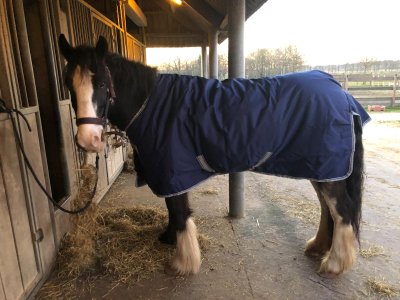It's winter blanket on or off?
It's winter blanket on or off?
In much of the country, the days are short and the nights are long and cold. Since we manage our horses in colder weather, the question is whether or not you should cover your horse. We can be brief: no, that is the short answer. Let's look at why that is, and under what conditions blanketing may be preferable or necessary.
Horses have developed very efficient ways of staying warm, even in very cold temperatures. There are two types of hair in your horse's coat, namely longer, stiffer cover hairs; and a soft, downy undercoat. The coat protects or shields the soft hairs from dirt and water, wicks away rain and collects moisture from sweat that could damage the undercoat. The soft, downy hairs of the undercoat retain heat and are insulation for your horse. The hair is wrapped in natural oils to make it water-resistant. Inside each hair is a muscle that controls the pilo-ector muscle. This muscle allows the hairs to stand upright or lay flat. When they stand up, there is a flow of warm air between them, just above the surface of the skin. When they lie down, warm air is released between them, cooling the area above the skin surface.
So why is food and drink important?
Horses that eat well and drink enough will put on a layer of fat in late summer and early autumn to prepare for the colder weather. Nutrition is also important during the cold weather. It is important that your horse gets enough hay to eat. When hay is fermented in the horse's large intestine, an incredible amount of heat is released. Your horse has a built-in oven that is fired with hay. Why is it that a burst of craziness suddenly runs through the pasture? Although it may seem like your horse or horses just got spooked or went crazy, this movement is another way of generating heat.
When must I give my horse a blanket?
- If he is cut for winter
- If older, with weight problems or difficulty moving
- If he is ill or injured
- When he is underweight.
- When no shelter is available
- If it is windy or rainy, or both
How well should you cover your horse?
A good fit is essential to keep your horse warm and safe. Make sure the blanket does not put pressure on your horse's withers, chest or shoulders. You may have to try different types of blankets to find one that fits your horse well. Many horses, especially horses that have been shod, will develop abrasions on the shoulders.